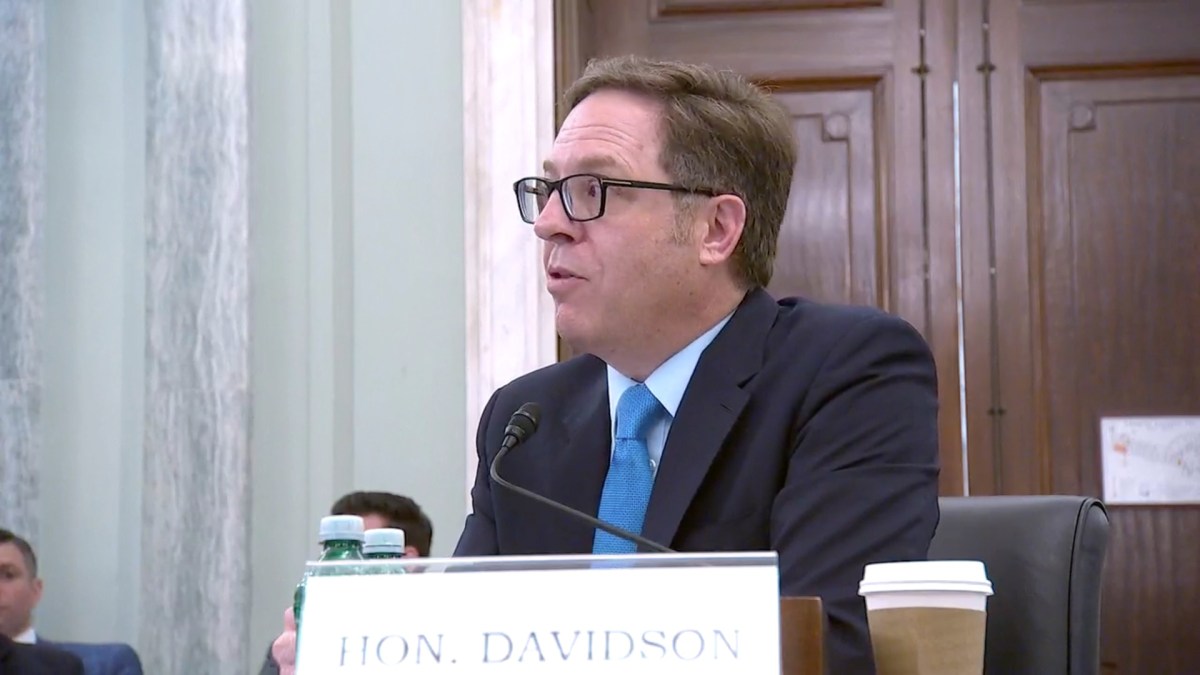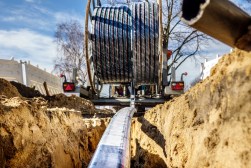Wait on FCC maps hangs over new broadband program

Members of the Senate Commerce Committee on Thursday questioned the Biden administration’s top telecommunications official on the impending rollout of $45 billion in new funding for broadband infrastructure, focusing often on how the distribution of that money hinges on long-awaited coverage maps that the FCC is still creating.
Alan Davidson, the administrator of the National Telecommunications and Information Administration, told senators that the new Broadband Equity, Access, and Deployment, or BEAD, program — which will distribute $42.5 billion over the next several years — is “off to the races,” with 36 states and territories having already signaled their intent to participate since a notice of funding opportunity was published May 13.
The BEAD program and other components of the NTIA’s “Internet for All” initiative were approved last year as part of the Infrastructure Investment and Jobs Act, which also included another $20 billion in broadband programs being administered by the FCC, the Agriculture Department and other agencies.
“Our top priority is closing the digital divide,” Davidson said in his opening remarks. “We have been talking about the digital divide in this country for 20 years. Now, Congress, through the bipartisan infrastructure law, has finally given us the tools to structurally address this problem.”
‘The maps are essential’
While committee members of both parties were eager to see the broadband money flow into their states, many also expressed concerns about the progress that the FCC has made in drafting new maps that more accurately reflect the availability of high-speed internet across the U.S. Those maps, which are to be based on granular Census data rather than information self-reported by internet carriers — will help determine how much funding new broadband projects will get from the BEAD program.
FCC Chair Jessica Rosenworcel has said she expects a first draft of the new broadband maps to be ready by fall.
“I’m worried. What bothers me is we don’t have the maps, and the thing you are using to make decisions are not necessarily accurate,” said Sen. Jerry Moran, R-Kan. “The end result cannot be one more time we’ve failed to make broadband available across the country.”
“The maps are essential,” Davidson said. “They are the biggest thing slowing us down. We have to get the maps right.”
Sen. Ben Ray Lujan, D-N.M., speaking for Tammy Baldwin, D-Wis., who was dealing with a bout of hoarseness, asked Davidson if the FCC’s new maps could also be used to inform grants from a $1 billion middle-mile program meant to help connect rural broadband services to larger networks. While Davidson called that program a “force multiplier,” he noted it will be distributed sooner than the BEAD funds, which have a longer application and approval process.
Davidson said the Internet for All guidelines stipulate that the middle-mile program is to be informed by the new FCC maps, but that there’s a “fallback” for using other mapping tools.
Senators from large western states, like Jacky Rosen, D-Nev., said they were concerned with how the NTIA will plan for broadband grants that could run up against land controlled by federal agencies, including the Bureau of Land Management and the Defense Department. Davidson said his agency is working on a memorandum of understanding with the Interior Department.
Hard-to-count places
Even if the FCC makes its fall deadline for a first draft, there will be a challenge period for state and local governments to nitpick the new maps, after which the commission will take more time to finesse a final version.
“We are at risk of being undercounted with regard to places that are notoriously difficult and challenging to count,” said Sen. Dan Sullivan, R-Alaska.
Davidson repeated that his agency is “very focused” on the mapping issue.
“Getting the maps right is essential,” he said. “We have to be spending the money in the right place. We can’t deploy without good maps.”
As the cartographic process plays out, Davidson said the biggest step currently is engaging with state and local governments, and with communities that may benefit from the broadband money as it’s distributed over the next half-decade.
“We view this as an all-of-government, all-hands-on-deck opportunity,” he said in response to another of Baldwin’s questions. “Engaging the public is essential. The NOFOs do require publicizing it, that people in the service area know what’s being provided.”






